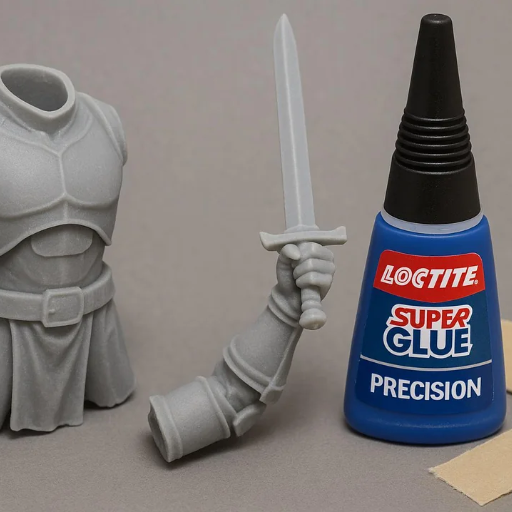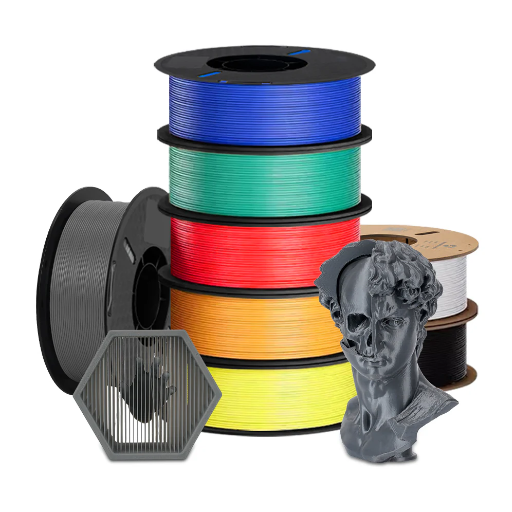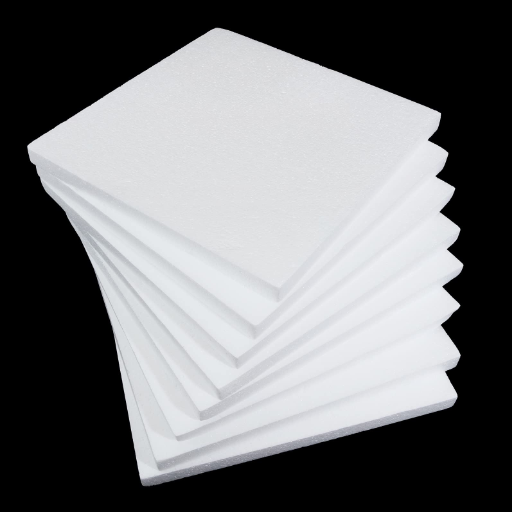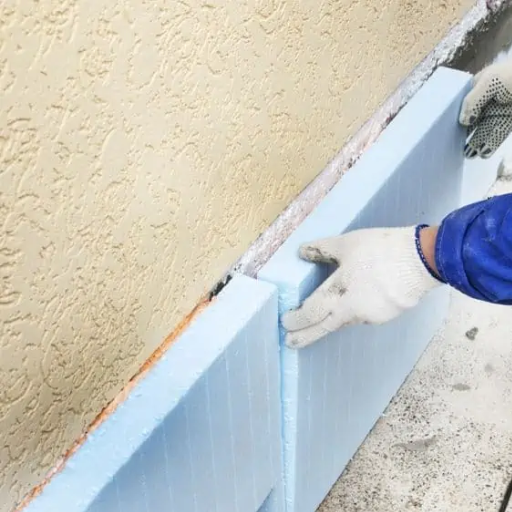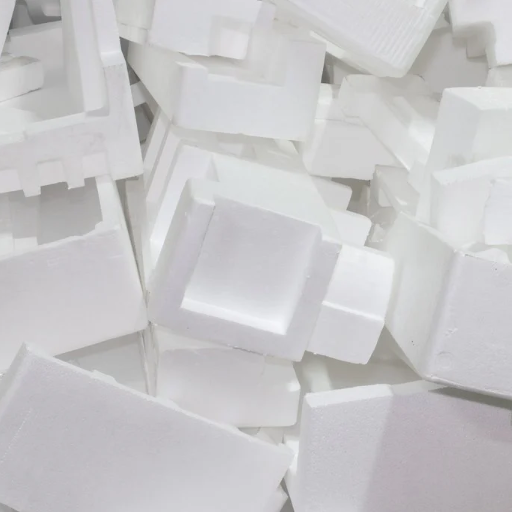Selecting the perfect product for adhesive solutions is imperative. In this case, we present a detailed comparison of Loctite Super Glue with other types of glue, highlighting their differences, functions, and efficiency. This review will analyze the chemical structure, curing period, strength, application methods, and other aspects of differentiation between Loctite Super Glue and other conventional glue products. After reading this article, you will acquire adequate knowledge regarding which adhesive best fits your particular projects, ranging from simple household repairs to complex industrial tasks.
What is Loctite Super Glue?

Loctite Super Glue is a super cyanoacrylate glue with fast bonding capabilities and exceptional strength. It works by forming bonds on a molecular level and cures almost instantly upon contact with moisture in the air. Ideal for use on metal, ceramics, wood, rubber, and some plastics, this adhesive solution is perfect for elaborate repairs and advanced applications. Its unique applicator makes it precise, and its resistance to temperature changes and impact makes the glue applicable for both everyday and industrial use.
Introduction to cyanoacrylate adhesives
Super glues, also known as cyanoacrylate adhesives, are a type of adhesive that forms strong bonds on different surfaces quickly and durably. These adhesives are based on acrylates and undergo a curing process through an anionic polymerization reaction that is started with moisture and hydroxyl ions. These types of adhesives are super-fast – due to the special properties of chemical compounds, cyanoacrylates bond metal, wood, ceramics, plastic, and rubber within seconds. Their forming permanent strong bonds and requiring little surface preparation makes them incredibly versatile.
Cyanoacrylate adhesives come in different viscosities to meet different needs; because of this, they are used throughout different industries such as automotive, electronics, medical devices, and even for household repairs. However, they have a downside since they can become weak when exposed to high humidity. While they work best to bonded materials that need immediate fixes, they require great care to avoid creating unwanted bonds.
The potential of Henkel Loctite Super products
Henkel’s Loctite Super products are known for their superior adhesives and offer industrial and consumer-grade products. Its unmatched adhesives guarantee fast and strong bonds on wood, metal, plastic, rubber, and ceramics. With advanced formulations, products under Loctite Super effectively resist impact, temperature islands, and aging, ensuring prolonged durability in challenging environments.
One of the key benefits of Loctite Henkel Super products is their ease of use. They come in liquid, gel, and surface specific packages, such as low bloom options for aesthetic finishes or flexible adhesives for dynamic joints. With no clog caps and pinpoint dispenser heads as standard, waste is minimized, while usability is significantly improved.
These products are used extensively in construction, manufacturing, automotive, and medical industries as they meet stringent bonding requirements. The unparalleled innovation in Super adhesives by Henkel is unmatched. They provide robust bonding solutions and set the benchmark for reliability and ease of use.
How Loctite Super Glue differs from other adhesives
Compared to its competitors, Loctite Super Glue is extraordinary with its bonding strength, precision, and versatility. Unlike traditional glues, it utilizes advanced cyanoacrylate formulations that can bond a wide range of materials, even porous ones, in mere seconds. It also offers greater resistance to water, high temperatures, and impact making it suitable for daily and industrial purposes. Furthermore, Loctite’s precision applicators with no clog caps make application easy while minimizing waste. All of these features combined with meeting rigorous industrial standards, make super glue reliable and effective compared to traditional options.
How Does Super Glue Work?

Super glue, also known as cyanoacrylate adhesive, goes through an almost instantaneous polymerization process that is enhanced by moisture, which is usually available in most surfaces. Once applied, the adhesive immediately starts creating strong molecular chains, marking the establishment of a durable bond. As cyanoacrylate monomers unite in reaction to hydroxyl ions, the glue sets and receives it’s maximum tensile strength. Its unique molecular properties enable adhesion to numerous substrates like plastics, metals, wood, and ceramics, thus proving its worth for various uses.
The Science Behind Cyanoacrylate
The function of cyanoacrylate adhesives relies on a chemical reaction whereby anionic polymerization serves as the major operational component of the process. When exposed to very low levels of humidity or water on a specified surface, the moisture triggers the reaction by unlocking hydroxyl ions leading to the linkage of cyanoacrylate monomers. This will later lead to the formation of robust polymer chains. Undergoing such steps yields a strong bond under a few seconds due to the high tensile strength which is converted during the polymerization step. Carbon and carbon bonds, alongside a reactive -C≡N (cyanide group) make up the structural composition of cyanoacrylate glue. These components facilitate the adhesion of various materials: plastic, wood, glass, metals, and ceramics. Because of its reliability and adaptability, Cyanoacrylate glue has become an essential adhesive in many sectors, including construction, automotive, electronics, and even surgical applications like suturing wounds.
Why Super Glue is a Versatile Adhesive
Super glue is adaptable because it bonds with many materials such as glass, wood, metals, ceramics, and plastic. It consists primarily of cyanoacrylate which bonds strongly and firmly when in contact with moisture on surfaces. Its exceptionally fast curing time, often within seconds, makes it very useful for both industrial and consumer purposes. Additionally, superglue can tolerate extreme environmental changes such as temperature variation and moisture exposure. Its multi-industry usability is remarkable as it is employed in precision repairs of electronics and construction, automotive repairs, and even in medicine for biocompatible wound closure. The glue’s multi-surface compatibility, strength, and rapid bonding make it a critical adhesive in engineering and daily activities.
Applications and Uses of Super Glue
Super glue has a wide range of applications across various industries due to its strong, fast-curing bond and versatility.
- Household Repairs: Super glue is frequently used for fixing broken glass, ceramics, plastics, and other household materials. It effectively addresses small cracks and joins delicate items with precision.
- Automotive Industry: It is employed in minor automotive repairs, such as bonding trims, sealing cracks, or fixing loose parts within cars, where durability and heat resistance are critical.
- Electronics and Technology: Super glue is used for securing small components in electronics, due to its ability to hold parts firmly without damaging the device.
- Medical Applications: Certain formulations of superglue, like medical-grade cyanoacrylate, are utilized in wound closure and surgical applications as they are biocompatible and reduce the need for stitches.
- Construction and Engineering: Super glue plays a significant role in adhering materials like wood, metal, or plastic in precision assembly, significantly speeding up processes in construction and engineering projects.
- Creative and Crafting: Artists and hobbyists frequently use super glue for model making, jewelry repair, or crafting where strong and detailed adhesion is required.
These applications highlight the adhesive’s adaptability and critical role in both everyday tasks and specialized industries. Its rapid setting time and ability to bond with diverse materials make superglue an indispensable tool.
Comparing Loctite and Other Super Glue Brands

Analysis of Loctite superglue about other brands indicates bonding strength, material compatibility, application accuracy, and general product durability are top considerations. In comparison to other options, \Loctite’s excelling formulation gives it a superior recognition as it strongly and reliably bonds metal, plastic, and rubber materials. Unlike generic superglue, Loctite products often come in distinct versions designed for particular uses, be it industrial use with high-strength or a super bond that is temperature resistant.
Apart from these, Loctite is also advanced in precision applications due to ease-of-use designs such as tip applicators that help ensure precision. Another clear advantage is durability since the Loctite glue brand is known to be less damaged by wear and impact, along with other environmental factors in comparison to other glues. Other super glue brands might be cheaper, but the performance they offer, especially in strength and durability, isn’t in the same ballpark. Overall, Loctite is still the leading adhesive of choice for professionals and non-professionals alike, making it the industry standard for glues.
Strengths of Loctite Super Glue
Loctite Super Glue stands out from competitors because of its unparalleled adhesion and multifunctional capabilities. Loctite super glue is a highly flexible adhesive with the ability to bond a myriad of materials, including but not limited to metal, plastic, ceramic, rubber, and wood. One of its greatest advantages is the fast curing time which does not require clamping. Therefore, a strong and lasting bond is formed in a matter of seconds.
Moreover, Loctite superglue has proved to be the most durable form of glue because of its exceptional resistance to moisture and extreme temperatures. In addition, the advanced formula displays low drip consistency which enhances precision in vertical or complex applications. Products in the Loctite range are greatly enhanced by introducing specialized applicator designs, like pinpoint nozzles or brush-on options, which increase ease of use and minimize material waste.
Last but not least, the reason Loctite Super Glue is used across the globe by both professionals and household users is the strict quality standards. The blend of strength, reliability, and ease of application makes it the best adhesive to use to achieve great results across all industries and projects.
Gorilla Glue vs. Loctite: Which is better?
The project needs to define the comparison between Gorilla Glue and Loctite profoundly. Gorilla Glue is a polyurethane glue that is remarkably strong and is known for bonding metal, wood, foam, glass, ceramics, and many other substances. It is ideal for uneven surfaces due to its effective curing such as filling gaps. Noteworthy, it is highly porous. There is significant work required to remove any excess material due to expansion, and the longer curing time is unhelpful for projects that need immediate results because it takes up to 24 hours.
On the contrary, Loctite Super Glue merges instantly unlike Loctite which has no expansion. This means the application is seamless as no material is lost especially on vertical surfaces. This glue is exceptional for small delicate repairs because it requires a fast and strong drying adhesive. What’s more, Loctite’s newer products are resistant to heat and moisture, marking them reliable in extreme conditions.
Gorilla Glue marks the sites that require heavy duty applications, especially where gap filling is needed. While, Loctite marks the areas where precision is needed. There is minimal effort needed to clean these areas. There is marked ease in deciding the appropriate glue for specific materials as the desired results stand evident.
Choosing the right adhesive for your needs
Finding the correct adhesive depends on the specific requirements of your project. Below are key factors to guide this decision:
- Material Compatibility
The adhesive must bond effectively with the materials involved. For instance, Gorilla Glue is ideal for porous surfaces like wood, foam, and certain plastics due to its expansion properties, ensuring a secure, gap-filling bond. Meanwhile, Loctite Super Glue performs efficiently on non-porous materials such as metal, ceramic, or glass, delivering precise and strong adhesion without any expansion.
- Application Environment
Environmental factors like heat, moisture, and temperature fluctuations can affect the performance of an adhesive. Loctite’s specialized formulas, with resistance to heat and moisture, are excellent for projects exposed to extreme conditions, while Gorilla Glue offers significant durability and water resistance for outdoor or rugged applications.
- Drying Time and Strength Requirements
If immediate results are necessary, opt for fast-drying adhesives like Loctite Super Glue, which cures quickly and ensures strong bonding within seconds. On the other hand, Gorilla Glue requires a longer curing period of up to 24 hours but provides exceptional strength for heavy-duty applications.
- Ease of Application
Precision repairs require adhesives that can be applied seamlessly without mess or waste. Loctite Super Glue excels in such scenarios, particularly for vertical or intricate surfaces. Gorilla Glue, while highly durable, may need careful application to manage its expansion characteristics.
By matching these factors with your project’s requirements, you can confidently choose between high-performance options like Gorilla Glue for robust, gap-filling tasks, and Loctite for detailed, precise repairs. Always review manufacturer recommendations to ensure optimal results.
Tips for Using Loctite Super Glue

- Preparation
Ensure surfaces are clean, dry, and free from dust, oil, or debris. Proper surface preparation enhances adhesion and ensures long-lasting results. Use a clean cloth or alcohol for thorough cleaning.
- Application
Apply a small amount of glue to one surface only. A single drop is often sufficient, as excess adhesive can weaken the bond or cause a mess. Press the surfaces together firmly for 10-30 seconds to allow the glue to set.
- Curing Time
While Loctite Super Glue bonds quickly, allow a few minutes for the initial set to strengthen, and up to 24 hours for a fully cured bond if maximum strength is required.
- Storage
To prolong the life of your adhesive, clean the nozzle after use and reseal the cap tightly. Store in a cool, dry place away from direct sunlight or moisture.
By following these guidelines, you can maximize the performance of Loctite Super Glue for precise and durable bonding.
How to Properly Use Superglue
- Prepare the Surface
Ensure the surfaces to be bonded are clean, dry, and free of any grease or debris. Use rubbing alcohol or a mild cleaning solution to remove contaminants for optimal adhesion.
- Apply the Adhesive Sparingly
Superglue is highly effective in small quantities. Apply a thin, even layer to one of the surfaces—excess adhesive can weaken the bond or cause a mess during the curing process.
- Join the Materials
Quickly and carefully align the surfaces, then press them together firmly. Hold steady for 10-30 error occurred during generation. Please try again or contact support if it continues.
Ensuring a Strong Cure and Bond
If superglue is to be useful, it needs proper curing to achieve a robust and durable bond. Once the surfaces are joined together, sustain firm pressure for about 10-30 seconds so that initial adhesion can set. For optimal strength, the bond should be allowed to cure for a full 24 hours in a dry environment. During this timeframe, try not to stress or moisturize the bond, as this can reduce the effectiveness of the curing process.
The success of curing is also greatly determined by other environmental conditions. Superglue works great in moderate temperatures (about 50°F to 80°F) and low humidity. An overabundance of moisture, extreme heat or cold may hinder the curing process and risk bond integrity. Moreover, superglue curing can be improved in harder conditions with the use of a specially designed accelerator or activator, guaranteeing better performance in difficult applications. The guidance of the manufacturer should always be adhered to ensure effectiveness with materials and use cases.
Common Mistakes When Using Superglue
- Applying excessive Glue
A common error is using too much glue, which not only slows down the curing process but may also weaken the bond. Superglue functions optimally when applied in small, uniform amounts, allowing it to penetrate surfaces effectively and form a strong bond.
- Improper Surface Preparation
Failure to clean and prepare surfaces can lead to poor adhesion. Grease, dirt, or oil on the surfaces prevents the glue from bonding properly. Always ensure surfaces are clean, dry, and free of contaminants before applying superglue.
- Not Considering Material Compatibility
Superglue is not effective on all materials, particularly non-porous or extremely smooth surfaces such as polyethylene, polypropylene, or certain soft rubbers. It is crucial to verify material compatibility and, where needed, use a primer or specialized adhesive designed for the specific material.
- Ignoring Environmental Conditions
Incorrect environmental conditions, such as high humidity, extremely low or high temperatures, or moist surfaces, can disrupt curing. Ensure the glue is used in a stable environment within the recommended temperature and humidity range provided by the manufacturer.
- Overhandling the Bond
Disturbing or applying stress too early during the curing process can compromise the bond. Once the parts are joined, resist the urge to adjust or use the bonded object until full curing is complete.
Understanding and avoiding these common mistakes will significantly improve the effectiveness and durability of superglue bonds while minimizing frustrations during use. Always consult product instructions for best practices.
Exploring the Potential of Henkel Loctite Super

Because of its unique blend, Henkel Loctite Super Glue bonds exceptionally due to its precision formulation and revolutionary adhesive technology. Its remarkable properties make it suitable in both industrial and household contexts as it works with a myriad of materials such as metals, plastics, ceramics, and even rubber. When cured in ideal conditions, this glue can dry in seconds which ensures reliable results as well as workflows. This superglue also bonds with the integrity to withstand high levels of shear strength and is durable enough to face extreme environmental challenges with temperature variances, as well as moisture. Following compatibility with the materials and curing recommendations enables users to achieve robust, long-lasting bonds even in extreme scenarios with the help of Henkel Loctite Super Glue.
Innovations in adhesive technology
Adhesive technology has experienced revolutionary changes over the past few years due to the rising need for stronger and more versatile solutions. Some of the advancements include the development of multi-material adhesive compatibilities such as Henkel Loctite products which are designed to bond a range of surfaces including plastics and metals along with ceramics and composites. This allows for the faster bonding of materials and better flexibility in materials engineering.
The introduction of light curing adhesives is another major innovation. Such adhesives are cured with UV or visible light and can thus be precicely used in electronics and medic appliances where application need to be produced quickly. With eco-friendly, biodegradable or solvent-free adhesives being a part of the market, glue technologies are inline with global standards.
Smart adhesive with conductivity or thermal management, such as in the electronics and automobile sector, changes the way components are manufactured. Conductive adhesives are today widely used for lightweight electric vehicle components, improving the efficiency and performance of these vehicles. These changes indicate that modern adhesives are joining two or more materials but the materials are blending into integrated systems.
Industrial applications of Loctite
Loctite, a widely recognized brand specializing in adhesives, sealants, and surface treatments, finds extensive application across various industrial sectors due to its reliable performance and versatility.
- Automotive Industry: Loctite products are used for thread locking, gasketing, and bonding components to ensure durability and reliability. They play a critical role in reducing vibration loosening, sealing fluid leaks, and improving the longevity of assemblies.
- Aerospace Industry: Loctite adhesives are employed for bonding lightweight composite materials, securing fasteners, and addressing stringent operational requirements. Their high resistance to temperature extremes and stress conditions makes them ideal for aircraft manufacturing and maintenance.
- Electronics and Electrical Industry: Loctite’s specialized adhesives and potting compounds are used for encapsulating electronic components, providing insulation, and ensuring thermal management. These products enhance device durability and safeguard components against environmental factors.
- Heavy Machinery and Construction: Applications include bonding large-scale components, protecting against wear and corrosion, and securing assemblies subjected to high mechanical forces. Loctite solutions are tailored for heavy-duty performance in harsh environments.
- Manufacturing and Maintenance: Loctite aids in repair and maintenance tasks such as fixing broken parts, reassembling machinery, and preventing equipment downtime. Its fast-curing formulas contribute to operational efficiency and cost-effectiveness.
The use of Loctite products ensures structural integrity, reduces maintenance frequency, and enhances production outcomes in demanding industrial environments.
The future of superglue products
Advancements in material science, environmental issues, and industrial innovative applications will shape the future of superglue products. Emerging formulations have focused on achieving high bond strength while biocompatibility is the tissue adhesives in surgeries. Also, more research is being done in the area of green adhesives which utilize renewable resources and minimize the use of Volatile Organic Compounds (VOCs) to comply with environmental regulations. Incorporating nanotechnology is expected to enhance adhesion properties and provide design flexibility for complex substrates. In addition, the ever-increasing demand for consumer superglue products available for versatile and extreme conditions is a clear indication of the superglue industry’s evolution to serve industrial, medical, and day-to-day requirements more efficiently. These phenomena indicate a clear change toward sustainable and high-quality adhesive technology shortly.
References
Frequently Asked Questions (FAQ)
Q: What is Loctite Super Glue and how does it compare to other glues?
A: Loctite Super Glue is a cyanoacrylate adhesive that is known for its quick curing time and strong bond. It is a versatile and reliable adhesive that can be used for both porous and non-porous materials. Compared to other glues, Loctite offers a comprehensive guide to Loctite Super Glue, making it a great choice for quick repairs and DIY projects.
Q: How does Loctite Super Glue work on plastic?
A: Loctite Super Glue is a great choice for repairing plastic due to its strong adhesion and ability to bond with non-porous surfaces. The formula is designed to create a durable bond that withstands stress and vibration, making it ideal for both small and large plastic repairs.
Q: What is the difference between Loctite Gel and Liquid Super Glue?
A: Loctite Gel Super Glue has a thicker consistency, making it ideal for vertical surfaces and porous materials where runny adhesives might drip. Liquid Super Glue, on the other hand, has a liquid consistency and is great for quick repairs where a thin, even application is needed. Both forms offer excellent adhesion and quick curing times.
Q: How long does it take for Loctite Super Glue to fully cure?
A: While Loctite Super Glue provides a strong bond almost instantly, it reaches full cure within 24 hours. This ensures the bond has achieved maximum strength and can withstand stress and vibration.
Q: Can Loctite superglue be used on metals and acrylic?
A: Yes, Loctite Super Glue is suitable for bonding metals and acrylic. It provides a strong, durable bond due to its cyanoacrylate formula, making it an excellent choice for repairs involving these materials.
Q: What are the benefits of using Loctite Super Glue Gel for DIY projects?
A: Loctite Super Glue Gel is ideal for DIY projects because its gel formula prevents dripping, allowing for precise application. It bonds quickly and effectively to porous and non-porous surfaces, making it versatile for various materials used in DIY projects.
Q: How can I ensure the best results when applying Loctite Glue?
A: To achieve the best results with Loctite Glue, clean and dry the surfaces to be bonded, apply the glue sparingly, and press the pieces together firmly. Allow the adhesive to set without disturbance to ensure a strong bond.
Q: What makes Loctite Super Glue a staple among professionals and DIY enthusiasts alike?
A: Loctite Super Glue has become a staple due to its fast-curing time, strong adhesion, and versatility. It meets the needs of both professionals and DIY enthusiasts by offering a reliable solution for a wide range of repair and bonding applications.
Q: How does Loctite Super Glue perform in vibration-prone environments?
A: Loctite Super Glue is designed to withstand vibration, making it suitable for environments where bonded materials may experience movement or stress. Its strong, durable bond ensures long-lasting repairs even under challenging conditions.
Q: What is the role of Henkel in unleashing the potential of Loctite Super Glue?
A: Henkel plays a crucial role in unleashing the potential of Loctite Super Glue by providing innovative adhesive solutions and a comprehensive guide to its usage. Henkel’s expertise ensures that Loctite Super Glue meets high-performance standards for various applications.
















